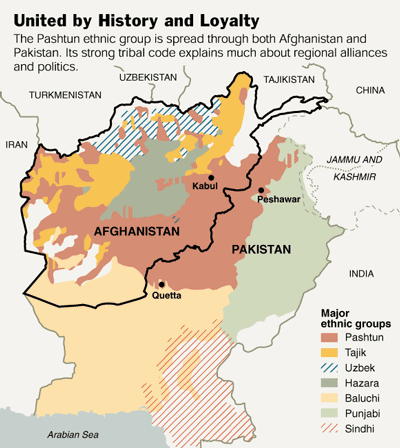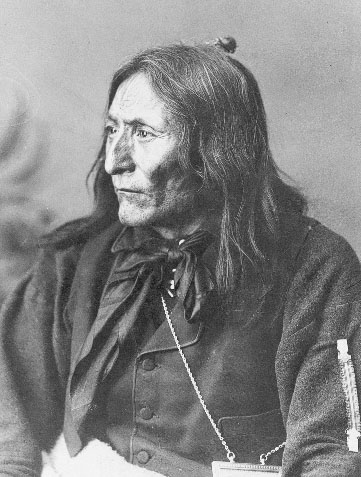Chief Crowfoot
""My brother, your words make me glad. I listened to
them not only with my ears but with my heart also.
In the coming of the Long Knives, with their firewater
and quick-shooting guns, we are weak and our
people have been woefully slain and impoverished.
You say this will be stopped. We are glad to have it
stopped. We want peace. What you tell us about this
strong power which will govern good law and treat the
Indian the same as the white man, makes us glad to
hear. My brother, I believe you, and am thankful."
 |
| Traditional hunting grounds of the Blackfoot Nation |
The history of Treaty Seven:
The Canadian Government wanted to ensure that the war and conflict that the US was enduring with its natives would not happen in the Canadian territories......
The native groups lead by Chief Crowfoot saw the end of their lifestyle (hunting and gathering over the vast prairies) and they wanted to protect their cultural identity and lifestyle as best they could....
"Treaty Seven was a peace treaty made between two nations - the tribes of the Blackfoot Confederacy, (Siksika, Piikani (Peigan) and Kainaiwa (Blood)), Tsuu T'ina (Sarcee), the Stoney (Bearspaw, Chiniki, and Wesley/Goodstoney) and Her Most Gracious Majesty the Queen of Great Britain and Ireland, by Her Commissioners, the honourable David Laird, Lieutenant Governor and Indian Superintendent of the North-West Territories, and James Farquharson Macleod, C.M.G., Commissioner of the North-West Mounted Police.
| Crowfoot speaking at the signing of Treaty Seven, 1877 |
When Treaty Seven was made in 1877, it became the last in a series of agreements concluded between the Government of Canada and the Indians of the North-West during the decade of the 1870's. Upon it's conclusion, more than twenty years would pass before another treaty was made. Treaty Seven completed the task which the government had set out to accomplish after it acquired control of Rupert's Land in 1870.
From the government's perspective, the need for Treaty Seven was immediate and simple. As part of the terms of bringing British Columbia into Confederation in 1871, the Canadian governments had promised to build a transcontinental railway within ten years. Such a line would have to traverse the newly-acquired land still nominally in control of Indian tribes. Huge land concessions would need to be offered to the company building the railway and later, the existence of the line would encourage large scale immigration to the western prairies.
When the British North America Act was passed in 1867, the responsibility for Indians and Indian lands had been vested in the federal government. Further, the government was bound by the terms of the Royal Proclamation of 1763, which recognized Indians as rightful, occupiers of their hunting grounds until such a time as these were ceded to a government authority. This meant that the railway could not be built until the rights of the Indians along it's route had been settled. Therefore, during the period from 1871 to 1876, the government of Canada had systematically concluded treaties with all tribes in the arable regions of the North-West Territories, with the exception of those inhabiting some 50,000 square miles of land south of the Red Deer River and adjacent to the Rocky Mountains. These lands were occupied by the Treaty Seven First Nations. The Articles of Treaty 7 outlined the areas where the present day Reserves now exist. The making of Treaty 7 occurred at "Blackfoot Crossing" which is located on the Siksika Reserve east of Calgary."
http://www.treaty7.org/TreatyNo7.aspx
A more recent example of a successful land claim:
The Nisga'a treaty between the province of British Columbia and the Nisga'a people signed into law in 1991.
"Those treaties, the legitimacy of which were reconfirmed in a new Canadian constitution enacted in 1982, acknowledged the rights of native peoples to control territory they occupied before European settlement. Proponents of the treaty also defend the provision allowing the Nisga'a to self-government, pointing out that they would still be functioning within the authority of Canadian law. Vancouver Sun newspaper columnist Vaughan Palmer said that although the new government may include powers over marriage, adoption, environmental protection and language and culture, "the Nisga'a laws do not override those of the province or national government." The Globe and Mail added that "this is not a nation within a nation" since the criminal code and Canadian charter of rights will still apply. "Our position is that if the Nisga'a people are comfortable with the deal, that is what matters," the official said. "There are aspects of the deal that won't be good for other communities, but its settlement is going to be different."
http://www.albionmonitor.com/3-10-96/canadiantreaty.html
 |
| Nisga Nation, BC created in 2000 |
The story of Nunavut may be an example of the process getting better and allowing from more direct involvement of indigenous people in their own affairs. Nunavut was created from the eastern portion of the North West Territories and handed over to the people of Nunavut in 1999. Archaeologists have found evidence of human habitation for 4000 years and these traditional lands showcase where the Inuit have lived for centuries.
| Nunavut Coat of Arms |
The government is run by a premier elected by the people of Nunavut and the system is run without parties and decisions are based on a consensus model. All within the framework of the Government of Canada.
| Nunavut the world largest (by area) landmass with a self governing indigenous mandate |
Could some of the ares that are along the Pakistan and Afghan borders be self governing territories within the structure of the Afghan and Pak government?
 |
| The Pashtun are the worlds largest indigenous group that does not have its own country |
Using the Nunavut, Nisga'a or Treaty 7 as examples the Canadian people have show that peace can reign in an area that is full of poverty, drug lords, war lords, national and international intrigue....
Chief Crowfoot decided to accept peace as he knew that change was coming. His people needed to be protected before they were wiped off the map or worse in their eyes would be complete assimilation with the white man's civilization.
So knowing some of the successful history of Canadian treaty with its indigenous people can the same be applied to the Pashtuns of Pakistan and Afghanistan?
Is there a Chief Crowfoot within the Taliban movement that will look at the never ending occupation of the country by US and other foreign troops and make the decision that enough is enough.....
In many ways the Afghanistan fight is similar to the fight for the west.
Do we use the American model and think of all this as a conquest or do we use the Canadian model and help the Afghans help themselves.
Afghanistan is moving towards the global economy and information that was never read before and banned from the eyes of its people, is now being downloaded onto Ipods and cell phones.
The genie is out of the bottle. Afghans want peace, want their culture and beliefs to stay intact but they also want to be part of the world.
 |
| President Karzai and former Taliban leaders |
The Taliban are organized by a group called the Quetta Shura and which is named after the city that Mullah Omar is located. From this group there needs to be leadership and a quest for peace or the war will continue for many more years.
| Mullah Omar leader of the Taliban |
"What is the Quetta Shura? The group has its origins following the U.S. and Northern Alliance offensive against the Taliban in November 2001. The Taliban’s remnants coalesced around Kandahar in southern Afghanistan. While Kandahar was taken in early December, much of the top leadership escaped into Pakistan. Mullah Mohammed Omar, the former de facto ruler of Afghanistan, quickly reconstituted an insurgent force now basing itself in the Baluchistan city of Quetta."
http://www.iar-gwu.org/node/106
Also another great story on the Quetta Shura:
http://gmcmissing.wordpress.com/2009/10/01/the-quetta-shura/


No comments:
Post a Comment